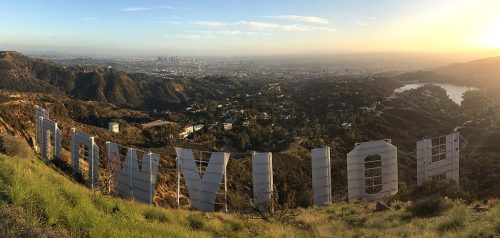By Gloria Gomez/UA Don Bolles Fellow/AZ Mirror
PHOENIX — A new analysis of a push to lure movie productions to Arizona with $150 million in tax credits says claims that the state will see a return on its investment are unfounded — and the state could end up getting little in return for its money.
Legislative budget analysts looked at Senate Bill 1708 and evaluated what impact it would have in its first three years. They concluded that Arizona could face a loss equivalent to the $150 million the bill is earmarking for movie companies.
The bill is an attempt to revive the 2005 Arizona Motion Picture Production and Infrastructure Credit program that oversaw a loss of $6.3 million in just one year. The new measure seeks to avoid the pitfalls of its predecessor by requiring film projects to perform pre production, post production and editing in Arizona, and offering tax credits for filming in-state and hiring locals. Under the bill, a company can be eligible to regain up to 25% of its production costs in tax credits.
Those credits are fully refundable, meaning movie companies could cash in even if they don’t owe the state taxes and critics say it constitutes bad economic policy.
“What you’re really doing is you’re taking government funds and you’re cutting a check to Hollywood,” Sen. Warren Petersen, R- Gilbert, said about the refundable nature of the tax credits during the full Senate’s discussion of bills on Feb. 24.
Proponents of the measure argue it will place Arizona higher up on the list of favorable filming locations, generating jobs and revenue over time from the arrival of production companies and tourists. Industry representatives have indicated two studio complexes could be built if the bill becomes law. While increased economic activity might offset some revenue loss, the committee’s analysis says the value produced by that activity will still be less than the amount lost to tax credit refunds for a while.
Profits will exceed costs eight years into the program’s operation, according to a study by the Rounds Consulting Group, a Tempe based company that analyzes the economic impact of public policy proposals.
But the analysts at the Joint Legislative Budget Committee think this is unlikely, pointing out that RCG’s estimate is out of line with previous studies of film tax credit programs in other states that had much lower estimations of costs versus revenue intake.
Claims that the tax incentives would give Arizona a competitive edge over other states are also unfounded: As many as 30 other states offer film credit programs that reduce production costs anywhere from 20% to 30%, and Arizona’s 25% is not much more enticing.
While the bill seeks to attract out of state film productions, in-state productions would also benefit – at the cost of taxpayers.
“For example, local commercials that would have been filmed regardless of the bill would now receive a credit of at least 15% of their production costs,” the JLBC analysis noted.
This program also doesn’t include minimum total spending requirements, instead making eligibility contingent on in-state production. To qualify for tax credits in California, projects must have a budget of at least $1 million — this ensures only the larger projects with greater rates of economic activity production benefit.
The bill was approved by the Senate on Feb. 24, and is currently making its way through the House of Representatives, where it has been assigned to the Appropriations Committee.
Gloria Gomez, a senior at the University of Arizona, is the 2022 UA School of Journalism’s Don Bolles Fellow working with editors from the Arizona Mirror. Gomez has interned at the Arizona Daily Star and worked at the Arizona Daily Wildcat. She is a dual major in journalism and political science, with a Spanish minor. She’s a member of the Investigative Reporters and Editors and National Association of Hispanic Journalists. The UA School of Journalism started the fellowship in 1977 to honor Don Bolles, an Arizona Republic reporter killed in a 1976 car bombing.

